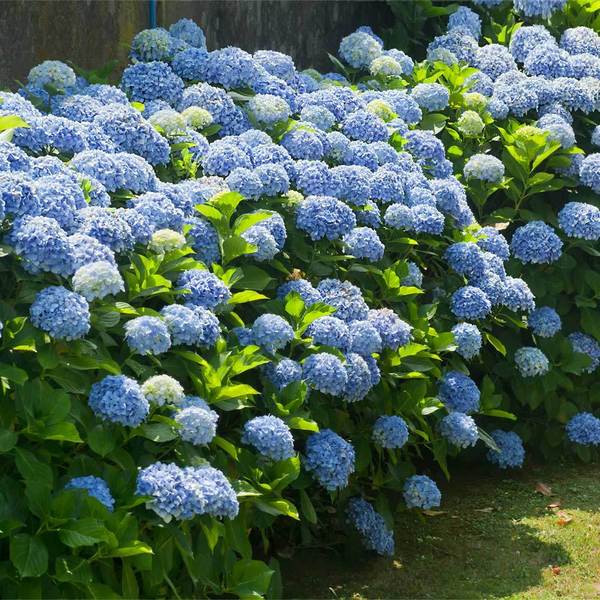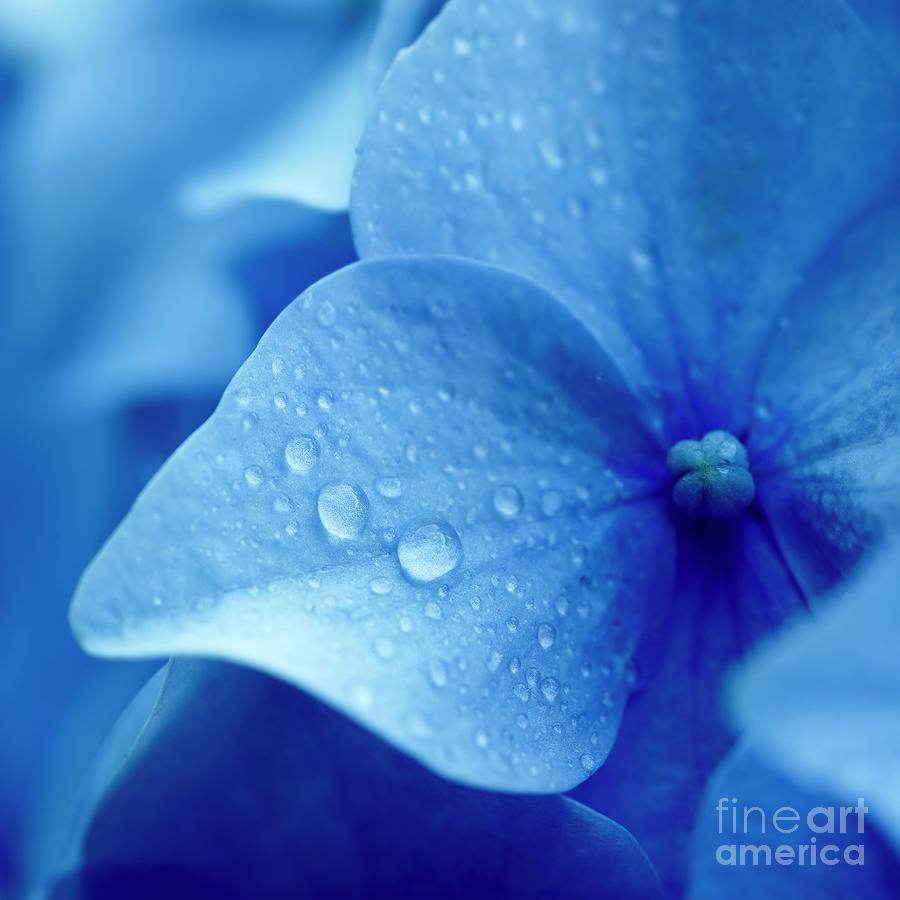The Secret To Growing Blue Hydrangeas
The Secret to Growing Blue Hydrangeas
Hydrangeas are beautiful flowering shrubs that can add a touch of elegance to any garden. But did you know that the color of their flowers can be affected by the pH of the soil? That's right, blue hydrangeas only bloom in acidic soil, while pink hydrangeas bloom in alkaline soil.
So, if you're looking to grow blue hydrangeas, the first step is to test the pH of your soil. You can do this with a simple soil test kit that you can find at most garden centers. Once you know the pH of your soil, you can take steps to adjust it accordingly.
If your soil is alkaline, you can add sulfur or peat moss to lower the pH. You can also add aluminum sulfate, which will help the hydrangeas absorb the aluminum they need to produce blue flowers.
Once you've adjusted the pH of your soil, it's important to keep it acidic by adding acidifying amendments on a regular basis. You can do this by adding coffee grounds, pine needles, or other acidic materials to the soil around your hydrangeas.
In addition to pH, there are a few other factors that can affect the color of hydrangea flowers. Sunlight is one factor. Hydrangeas that receive full sun will tend to bloom pink, while those that receive partial shade will tend to bloom blue.
Watering is another important factor. Hydrangeas need regular watering, but they don't like to sit in wet soil. Be sure to water deeply and infrequently, and avoid watering your hydrangeas in the evening, as this can encourage fungal diseases.
With proper care, you can easily grow beautiful blue hydrangeas in your garden. Just remember to keep the soil acidic, provide plenty of sunlight, and water regularly.
Here are some additional tips for growing blue hydrangeas:
- Plant your hydrangeas in a location that receives partial shade. Full sun will make the flowers pink, while too much shade will make them pale.
- Water your hydrangeas deeply and infrequently. Avoid watering them in the evening, as this can encourage fungal diseases.
- Add acidifying amendments to the soil around your hydrangeas on a regular basis. This will help to keep the pH acidic and encourage blue flowers.
- Fertilize your hydrangeas in the spring with a fertilizer that is specifically designed for hydrangeas.
- Deadhead your hydrangeas regularly. This will encourage new blooms.
- Protect your hydrangeas from winter damage. If you live in an area with cold winters, you may need to mulch your hydrangeas or cover them with a burlap sack.
With a little care and attention, you can enjoy beautiful blue hydrangeas for years to come.
Blue hydrangeas are one of the most popular flowering shrubs in the world, and for good reason. Their large, colorful blooms can add a touch of elegance to any garden. But did you know that the color of blue hydrangeas can actually be controlled?
That's right, by adjusting the pH of the soil, you can influence the color of your blue hydrangeas. In acidic soils, blue hydrangeas will bloom in their signature blue color. However, in neutral or alkaline soils, they will bloom in pink or lavender.
If you're interested in growing blue hydrangeas, I recommend visiting . This website has a wealth of information about blue hydrangeas, including how to grow them, how to care for them, and how to control their color.
FAQ of blue hydrangea
- What makes a hydrangea blue?
The color of hydrangea blooms is determined by the acidity of the soil. In acidic soils, with a pH of 5.5 or less, hydrangeas will bloom blue. In alkaline soils, with a pH above 7.0, hydrangeas will bloom pink or red. With a pH between 6 and 7, the blooms may turn purple or bluish-pink.
- How can I make my hydrangeas bluer?
If you have hydrangeas that are blooming pink or red, you can make them bluer by adding aluminum sulfate to the soil. Aluminum sulfate is a naturally occurring compound that can lower the pH of the soil. You can find aluminum sulfate at most garden centers.
To add aluminum sulfate to your soil, simply mix it into the top 6 inches of soil around your hydrangeas. The amount of aluminum sulfate you need will depend on the acidity of your soil. For most soils, you will need to add about 1/2 cup of aluminum sulfate per 10 square feet of planting area.
- What kind of blue is hydrangea?
The color of hydrangea blooms can vary depending on the variety of hydrangea, the acidity of the soil, and the amount of sunlight the plant receives. In general, hydrangea blooms can range in color from light blue to deep blue, lavender, purple, or pink.
- How do I care for blue hydrangeas?
Blue hydrangeas are relatively easy to care for. They need full sun or partial shade and moist, well-drained soil. They should be fertilized in the spring with a balanced fertilizer. In the fall, you can add a layer of mulch around the plants to help protect their roots from the cold.
- How long do blue hydrangeas bloom?
Blue hydrangeas typically bloom from mid-summer to early fall. The exact blooming time will vary depending on the variety of hydrangea and the climate.
Image of blue hydrangea
5 different images of "blue hydrangea" from Pinterest:
- A large, lush bush of blue hydrangeas in full bloom. The flowers are a deep, vibrant blue and are arranged in large clusters. The bush is surrounded by green foliage.

- A close-up of a single blue hydrangea flower. The flower is a delicate shade of blue and has wavy petals. The center of the flower is a darker blue.

- A bouquet of blue hydrangeas in a vase. The hydrangeas are arranged in a loose bouquet and are surrounded by greenery. The flowers are a variety of shades of blue, from light to dark.

- A blue hydrangea swag hanging on a wall. The swag is made up of several blue hydrangeas that are arranged in a cascading pattern. The hydrangeas are a deep blue color and are surrounded by green leaves.
- A blue hydrangea tree. The tree is covered in large, blue flowers that are arranged in clusters. The flowers are a deep, vibrant blue and are surrounded by green leaves.


Post a Comment for "The Secret To Growing Blue Hydrangeas"